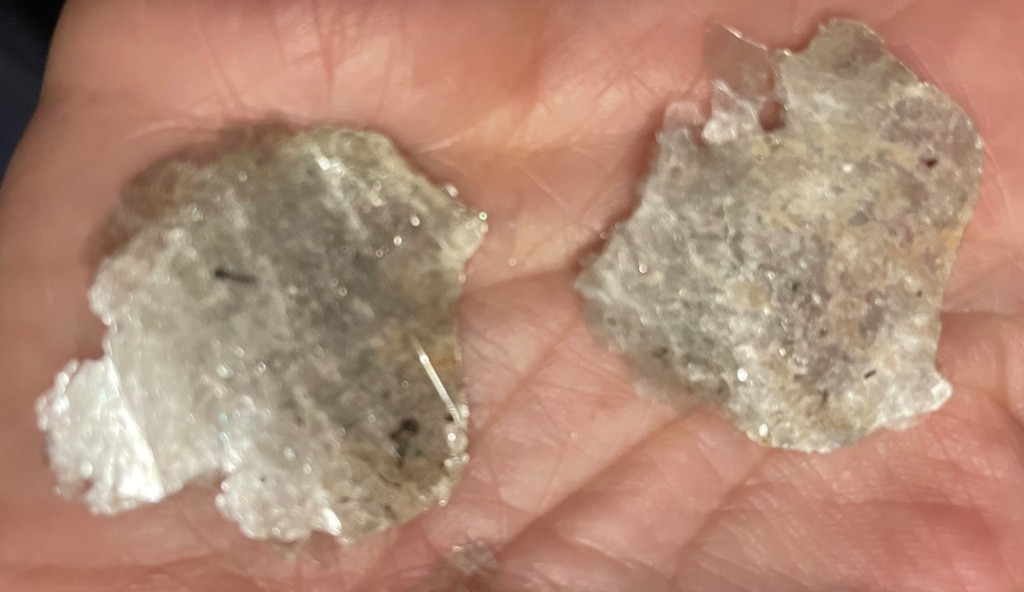
If you follow my blog, you may know that I don’t post here very often anymore. My twice-weekly writings make their way into my subscriber newsletter: Loving the World: Visits with Nature and Deeper Connection (link to right). But today’s newsletter, which started with a happy exploration of this delightful, shiny mineral, led me to a cause I want to support–thus the posting here. Most of the piece is about the wonders of mica (and some other shiny beings in nature), but at the end you will read about the dark side alluded to in the title. Please consider spreading the word, and donating to the cause (via UNICEF) if you can.
When I was cranky the other evening, Tom knew that handing me a random slice of mica he found among the driveway gravel would lift my spirits instantly.
Minerals don’t generally feature in my nature writing—I don’t know much about them, and they often don’t grab me the way a plant or animal will. But, as with most everything, once you learn more it becomes infinitely more interesting. Mica is a good “gateway” substance into the world of minerals—easy to love at first glance.
Micas—there are 37 types—are known as sheet silicas. They all come in layers. The mineral name comes from the Latin micare—to shine, and other things in nature also have that root. The Philodendron micans plant is known for its iridescent shimmer. There is an African leafhopper bug called Recilia mica, but pictures of it are extraordinarily hard to come by. If the relatives found on this page are comparatively less shiny, it must be stunning! To me, the bugs look like models for elaborate Egyptian sarcophagi. And, closer to home, caddisfly larvae have been found “dressing up” in mica—see image from Colorado here.
A Citizen Times column says that American Indians of the Southern Appalachian region used mica as an ornamentation at gravesites; and that Cherokees used the mineral as a medium of exchange. The column covers a lot of history—like the use of large mica sheets as windows—called isinglass, or the boom in its use during WWII, for vacuum tubes.
The Citizen Times also says that ancient Hindus believed that mica was preserved lightning flashes, and they used it for a gamut of purposes—in medicine, for glazing windows, and as a surface for paintings.
Years ago, a poem I wrote about mica made it into a college journal, and then this Poetry with Mathematics blog. If you read the poem, you can see I was waxing entirely enthused and wistful when I wrote about this substance. So, when I Googled “collecting mica” today, I was expecting to find similar fans discussing their happy finds.
It was shocking to find news coverage of child labor in African and Indian mica mines. What the children collect eventually gets to many products in America—electronics, trains, even makeup. The contrast between the pleasure I find in this glimmering mineral and the exploitation of children to collect it evokes deep sadness. I found, and signed, this petition, and UNICEF is accepting donations.